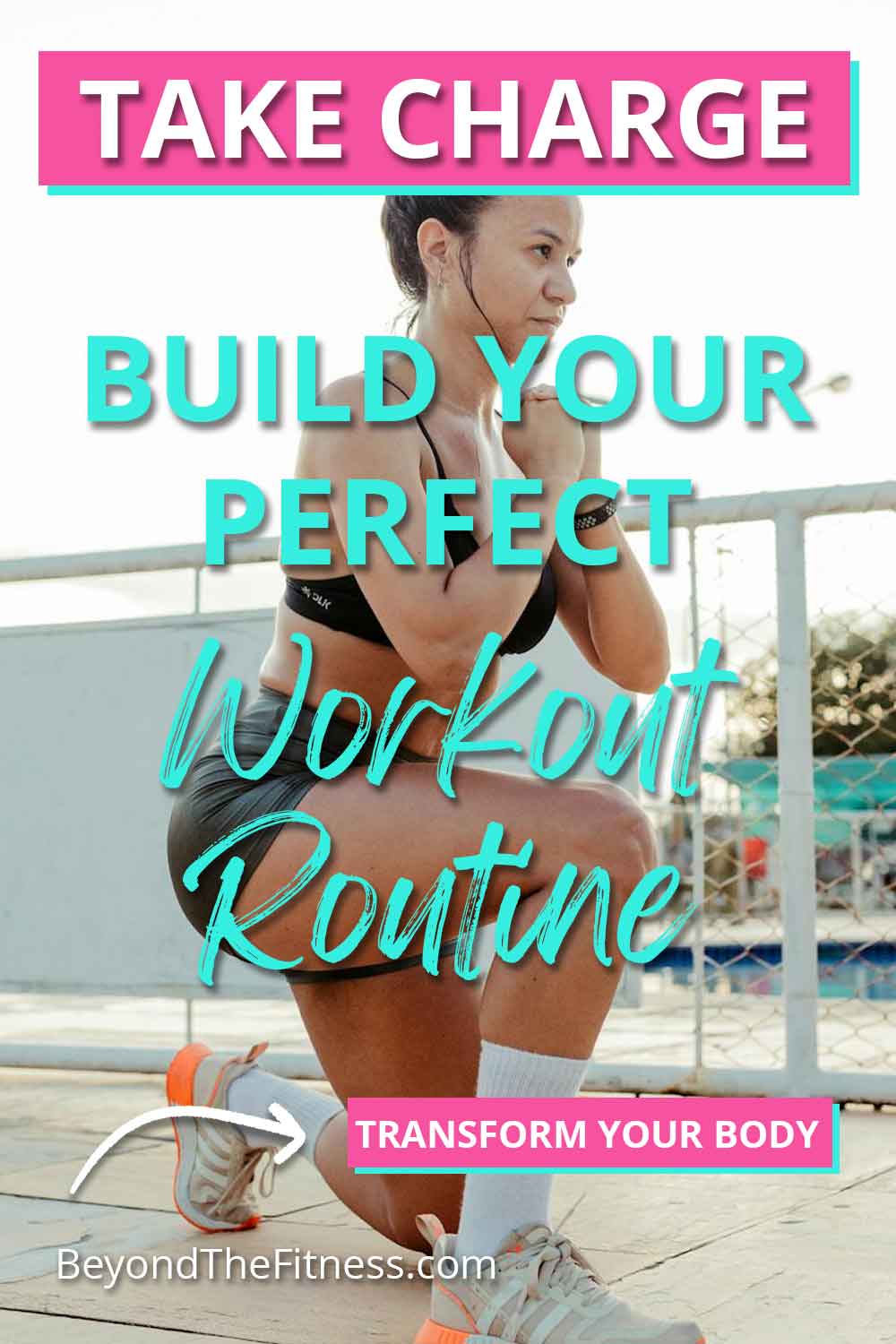When it comes to staying fit and healthy, having a workout routine that fits your life is key. I know that figuring out where to start can feel a little overwhelming. Don’t worry—I’ve got you covered! Let me walk you through how to create your own workout plan step-by-step. It’s easier than you think, and you’ll have a plan that works for your goals and schedule.
Why Having a Workout Plan Matters
A workout routine isn’t just about staying active—it’s about knowing what to do, when to do it, and how it fits into your daily life. When you have a plan, you won’t waste time guessing what to do at the gym or at home. Plus, it keeps you motivated and makes it easier to track your progress.
Step 1: Think About Your Goals
The first thing to do is decide what you want to achieve. Everyone’s goals are different. Here are some examples:
- Get stronger: You might want to lift weights or do bodyweight exercises.
- Lose weight: Focus on cardio and calorie-burning workouts.
- Feel more energetic: Try fun activities like dance or yoga.
- Build muscle: Strength training is your go-to.
Once you know your goals, you can pick the right exercises to match.
Step 2: Choose Where You’ll Work Out
Do you prefer working out at home, at the gym, or outdoors? Each has its benefits:
- Home workouts: These are convenient, and you don’t need fancy equipment. Bodyweight exercises, resistance bands, or dumbbells work great.
- Gym workouts: Gyms have a wide range of equipment and space for more complex exercises.
- Outdoor workouts: Fresh air and a change of scenery can make exercising more enjoyable.
Pick what feels comfortable and realistic for you.
Step 3: Decide How Often You’ll Exercise
The next step is figuring out how many days a week you’ll work out. A good starting point is three to five days per week. Here’s an idea of how you can plan it:
- 3 days a week: Perfect for beginners or busy schedules.
- 4-5 days a week: Great if you want faster progress or enjoy working out.
Remember to include at least one or two rest days so your body can recover.
Step 4: Mix Up Your Workouts
Doing the same thing every day can get boring, and your muscles might stop responding. To avoid this, include different types of exercises in your routine. Here are some workout ideas:
Strength Training
This helps you build muscle and burn calories even after you’re done working out. Exercises to include:
- Squats
- Push-ups
- Lunges
- Plank holds
Cardio Workouts
These get your heart pumping and help you burn calories. Some fun cardio options are:
- Running or brisk walking
- Dancing
- Jumping rope
- Cycling
Flexibility and Balance
Stretching and balance exercises keep your body flexible and prevent injuries. You can try:
- Yoga
- Pilates
- Simple stretches like touching your toes or side bends
Step 5: Create a Weekly Schedule
Now that you know your goals, where you’ll work out, and the types of exercises you want to do, it’s time to put it all together. Here’s a simple example of a weekly workout plan:
- Monday: Strength training (upper body)
- Tuesday: Cardio (20-30 minutes)
- Wednesday: Rest or light yoga
- Thursday: Strength training (lower body)
- Friday: Cardio (30 minutes)
- Saturday: Flexibility and balance
- Sunday: Rest
You can switch things around or change the focus based on what you enjoy.
Step 6: Warm Up and Cool Down
Every workout should start with a warm-up and end with a cool-down. A warm-up prepares your muscles and helps prevent injuries. It can include:
- Light jogging
- Arm circles
- Jumping jacks
Cooling down after your workout helps your body recover. Spend five to ten minutes stretching, focusing on the muscles you worked.
Step 7: Track Your Progress
It’s so motivating to see how far you’ve come! Keep track of your workouts in a notebook or use an app. Write down things like:
- How much weight you lifted
- How far you ran
- How many reps you completed
By tracking your progress, you’ll know when it’s time to challenge yourself by adding more weight, increasing your reps, or trying a new exercise.
Step 8: Don’t Forget About Nutrition
Exercise is just one part of the puzzle. To feel your best, you’ll need to eat well too. Focus on these basics:
- Protein: Helps with muscle recovery (chicken, tofu, eggs).
- Healthy carbs: Give you energy (brown rice, quinoa, fruits).
- Healthy fats: Keep you full and support your health (avocados, nuts, olive oil).
- Water: Stay hydrated before, during, and after workouts.
Eating a balanced diet will help you feel strong and see better results from your workouts.
Step 9: Make It Fun
Working out doesn’t have to feel like a chore. Pick activities that you enjoy. If you love dancing, try a Zumba class. If you’re competitive, maybe you’ll enjoy sports. Changing things up keeps it exciting and makes you look forward to your workouts.
Step 10: Listen to Your Body
Some days, you’ll feel amazing and ready to take on anything. Other days, you might feel tired or sore. That’s okay! Listen to your body and rest when you need to. Overdoing it can lead to burnout or injuries, so don’t be afraid to take it easy if you need to.
Building your own workout routine is like creating a recipe for success. Start small, stay consistent, and tweak it as you go. Before you know it, you’ll have a plan that’s perfect for you!
Taking Your Workout Routine to the Next Level
Once you’ve created a solid workout routine, the journey doesn’t stop there. Your fitness journey is dynamic, and as you grow stronger and more confident, there’s always room to tweak and elevate your routine. Let’s explore more ways to make your workouts even better and ensure they stay effective and enjoyable.
Add Variety to Prevent Plateaus
When your body gets used to doing the same exercises over and over, you might hit a plateau. That’s when progress slows down, and you stop seeing the results you want. To avoid this, it’s important to mix things up.
Try New Workouts
Switching to a different type of workout can challenge your muscles in new ways. For example:
You Might Be Interested In: Learning more about The Complete Smoothie Detox & Weight Loss Program
- If you’ve been doing steady-state cardio, try high-intensity interval training (HIIT).
- If you’ve only been lifting light weights, experiment with heavier ones or resistance bands.
- If you’re a runner, add some hill sprints or try cycling for a change.
Change Your Routine Every 4–6 Weeks
Your body adapts to workouts over time, so it’s good to update your routine every month or so. You can:
- Increase the number of sets or reps.
- Add more challenging exercises.
- Shorten your rest time between sets.
Even small adjustments can make a big difference.
Focus on Progressive Overload
Progressive overload is a fancy term that means gradually making your workouts harder over time. This is key to building strength, endurance, and overall fitness. Here’s how you can do it:
- Increase weight: If you’re lifting weights, add a little more each week.
- Do more reps: Try adding one or two extra reps to each set.
- Add time: Extend your cardio sessions by a few minutes.
- Reduce rest time: Shorter breaks can make your workouts more intense.
Progressive overload helps your body adapt and grow stronger without overwhelming it.
Include Compound Exercises
Compound exercises work multiple muscle groups at once, making your workouts more efficient. They’re perfect for busy days when you want to get the most out of your time. Some great compound exercises include:
- Deadlifts: Work your back, legs, and core.
- Bench presses: Target your chest, shoulders, and triceps.
- Pull-ups: Strengthen your back, shoulders, and arms.
- Burpees: Combine cardio with strength by working your whole body.
These exercises also burn more calories, making them a great choice for weight loss or maintenance.
Prioritize Recovery
It’s easy to focus only on the workouts, but recovery is just as important. Your muscles need time to repair and grow stronger. Here’s how to make recovery a priority:
- Get enough sleep: Aim for 7–9 hours of sleep each night. Sleep helps your body recover and boosts your energy.
- Stretch regularly: After each workout, spend 5–10 minutes stretching. This keeps your muscles flexible and reduces soreness.
- Use active recovery days: On rest days, do light activities like walking, yoga, or a casual bike ride.
Taking care of your body outside the gym is just as important as what you do inside it.
Use the Right Equipment
The equipment you use can make a big difference in your workouts. Whether you’re at home or in the gym, having the right tools can help you stay motivated and challenge yourself.
At Home
If you work out at home, consider investing in:
- Dumbbells or kettlebells
- Resistance bands
- A yoga mat
- An adjustable bench
- A jump rope
At the Gym
Take advantage of gym equipment like:
- Free weights and machines
- Treadmills, ellipticals, and stationary bikes
- TRX suspension trainers
- Battle ropes or medicine balls
Using a mix of equipment can keep your workouts interesting and versatile.
Track Your Nutrition Alongside Your Workouts
While exercise is crucial, nutrition is what fuels your progress. Paying attention to what you eat can help you reach your fitness goals faster.
Pre-Workout Snacks
Eating a light snack 30 minutes to an hour before your workout gives you energy. Try:
- A banana with peanut butter
- Greek yogurt with a handful of berries
- A small smoothie made with fruit and protein powder
Post-Workout Meals
After your workout, focus on foods that help your muscles recover. Combine protein and carbs, like:
- Grilled chicken with sweet potatoes
- A protein shake with a banana
- Eggs with whole-grain toast
Stay Hydrated
Don’t forget about water! Staying hydrated improves your performance and helps your body recover faster. Aim for at least eight glasses of water a day, and more if you’re sweating a lot.
Build a Support System
Sometimes, sticking to a routine can be tough, but having support makes it so much easier. Surround yourself with people who encourage you and share your fitness goals.
Find a Workout Buddy
Having someone to work out with can make it more fun and hold you accountable. You can motivate each other to show up and push through tough workouts.
Join a Class or Group
Classes like Zumba, spinning, or yoga are great for meeting like-minded people and staying consistent. Plus, group settings often bring extra energy to your workouts.
Share Your Journey
Whether it’s on social media or in a private journal, documenting your progress can keep you motivated. Sharing your wins—even small ones—can inspire others and remind you of how far you’ve come.
Stay Consistent and Celebrate Small Wins
Consistency is the secret ingredient to any successful workout routine. Even on days when you don’t feel like it, showing up and doing something—no matter how small—keeps you moving forward.
Focus on Habits
Make fitness a regular part of your day. For example:
- Set aside the same time every day to work out.
- Pack your gym bag the night before.
- Keep your workout clothes in plain sight to remind you.
Celebrate Milestones
Every little victory counts! Did you lift heavier weights this week? Run a little farther? Stick to your routine for a month? Celebrate it! Recognizing your progress keeps you motivated and proud of what you’re accomplishing.
Make Adjustments as You Go
Life happens, and your workout routine might need to change from time to time. That’s perfectly okay! The most important thing is to stay flexible and adjust when needed.
- Busy week? Shorten your workouts or switch to quick, high-intensity sessions.
- Feeling burned out? Take an extra rest day or try a new activity to recharge.
- Achieved a goal? Set a new one and update your routine to match.
Your routine should work for you, not the other way around.
Keep Learning and Growing
The fitness world is full of exciting ideas and new trends to explore. Keep an open mind and try new things to keep your workouts fresh and enjoyable. Some ways to stay inspired include:
- Following fitness blogs or YouTube channels for workout ideas.
- Listening to podcasts about health and wellness.
- Reading books or articles about exercise science.
- Taking workshops or classes to learn new skills.
The more you learn, the more confident you’ll feel about creating workouts that suit your needs.
Building and improving your workout routine is an ongoing journey. It’s about finding what works for you, staying consistent, and always being open to growth. With time and effort, you’ll feel stronger, healthier, and more confident in your fitness journey.







